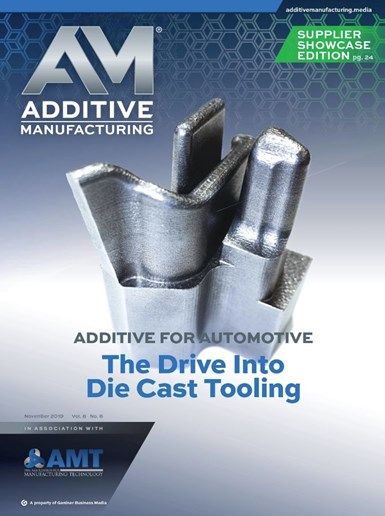Is 3D Printed Tooling a Solution for Die Casting?
After tackling the 3D printer, material and design, there's still one challenge left for Exco Engineering: convincing customers.
Share










Die casting is a particularly harsh operation. The process involves forcing molten metal into a mold cavity at high pressure, and is commonly used to make automotive parts such as engine blocks, wheels and engine cradles. The tooling that produces these parts must be durable, and buyers are not likely to trust a new process easily. In other words, die cast tooling is not an obvious place to experiment — but the challenge of the process makes it exactly the kind of application that is ideal for testing the limits of metal 3D printing.
This is what Exco Engineering (located in Toronto) has done over the last four years. In an initiative led by Wes Byleveld, now director of additive manufacturing, the company has not only proven that 3D printed tooling can withstand the die cast process, but that it also provides benefits to that process in the form of better cooling, reduced cycle time and longer tool life.

Wes Byleveld, director of additive manufacturing, stands near one of Exco Engineering’s EOS metal 3D printers. The company currently owns two for its die cast tooling work, and could add more in the future.
Getting to this point has been an uphill battle. Steps along the way have involved finding the right metal printer that could handle the work; a change in material; and pushing the limits of conventional design rules with simulation. Mr. Byleveld and his team still aren’t finished. The challenge Exco faces now? Explaining to customers the value that this 3D printed tooling offers.

Read the full story of Exco’s journey into 3D printed die cast tooling in this story from Senior Editor Brent Donaldson.
Read More in Additive Manufacturing
This article is the cover story of Additive Manufacturing’s November/December 2019 issue. Check out the digital edition for this story and others covering AM for aerospace, 3D printed cutting tools, better brackets and more.
Want to learn more about industrial 3D printing and additive manufacturing? Subscribe and never miss an issue.
Related Content
-
Schwanog Custom Form Tools Reduce Cycle Times
IMTS 2024: Schwanog’s insertable form tool system supports the manufacture of precision parts for industries such as medical, automotive, aerospace and others.
-
Faster Programming and Training Helps Automotive Shop Thrive
Features that save on training, programming and cycle times have enabled Speedway Motors to rapidly grow and mature its manufacturing arm.
-
The Role of Surface Finishing in Modern Manufacturing: Trends and Best Practices
You’re attending IMTS to advance your business. Regardless of your role in the manufacturing process, considering how your parts will be finished is crucial. This article can help you understand trends in surface finishing and better communicate with your finishing partners.

.jpg;width=70;height=70;mode=crop)





















.png;maxWidth=150)






.jpg;maxWidth=300;quality=90)



